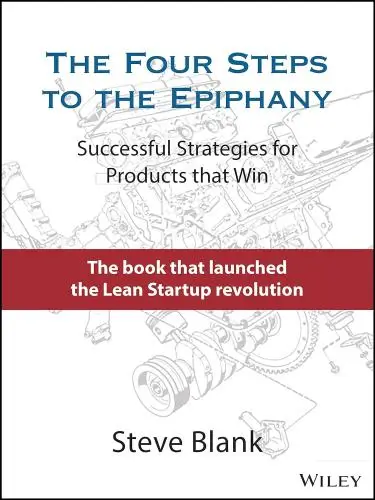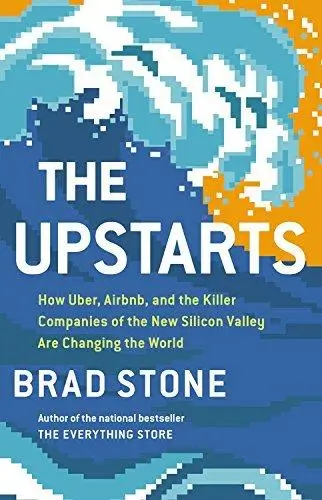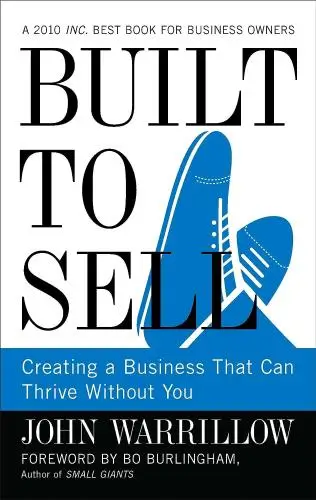
The Four Steps to the Epiphany
Successful Strategies for Products that Win
What's it about?
The Four Steps to the Epiphany by Steve Blank offers a roadmap for starting a successful company. It introduces the Customer Development model, which emphasizes understanding customers' needs before developing a product. You'll learn to validate your business idea through real-world feedback, reducing the risk of failure. This practical guide is essential for entrepreneurs looking to build a customer-centric business.
About the Author
Steve Blank is an influential Silicon Valley entrepreneur, recognized for pioneering the Lean Startup movement. He authored "The Startup Owner's Manual," emphasizing customer-focused product development. Blank's work is characterized by practical, actionable insights derived from his extensive experience, advocating for iterative processes and validated learning in building successful startups.
10 Key Ideas of The Four Steps to the Epiphany
Embrace Customer Discovery to Validate Your Business Model
The core idea is to get out of the building and interact with potential customers to understand their problems, needs, and whether your product or service truly addresses those issues.
This step involves conducting interviews, gathering feedback, and observing customer behavior in real contexts.
The goal is to validate or invalidate your hypotheses about your business model, including your value proposition, customer segments, channels, and revenue streams.
This process helps in avoiding the costly mistake of developing a product that no one wants.
Learn DeeperIdentify Your Target Customer: Start by defining who your ideal customer is. Think about demographics, behaviors, and needs. This will guide you in finding the right people to talk to.
Create a Hypothesis: Before you interact with potential customers, formulate clear hypotheses about your business model. What problem are you solving? How does your product solve it? Who will pay for it?
Conduct Customer Interviews: Reach out to potential customers for interviews. Ask open-ended questions to understand their problems and needs. Listen more than you talk.
Observe Customer Behavior: If possible, observe how potential customers solve their problems without your product. This can give you insights into their real pain points and how your solution fits into their lives.
Iterate Based on Feedback: Use the feedback and observations to refine your hypotheses. If your assumptions are invalidated, don’t be afraid to pivot your approach or even your entire business model.
- Example
A startup developing a new fitness app might identify their target customer as busy professionals aged 30-45 who value health but struggle to find time for exercise. They could then interview this demographic to understand their routines, motivations, and frustrations with current fitness solutions.
- Example
A company creating an online tutoring platform might hypothesize that students struggle with math because they don't get enough personalized attention. They could observe a classroom setting or conduct interviews with students and teachers to validate or invalidate this hypothesis.
Implement Customer Validation to Build a Repeatable Sales Model
After discovering and understanding customer needs, the next step is to validate that your product can be sold to customers in a way that is repeatable and scalable.
This involves testing your sales and marketing strategies, pricing, and distribution channels to ensure they resonate with your target market.
The aim is to find a sales model that can be replicated for the first few customers and then scaled.
This step is crucial for proving that the business can be profitable and sustainable in the long term.
Learn DeeperIdentify Your Target Market: Start by clearly defining who your ideal customers are. Consider factors like demographics, interests, and the problems they need solving. This will help you tailor your sales and marketing efforts more effectively.
Develop a Minimum Viable Product (MVP): Create a simplified version of your product that solves the core problem for your target market. This allows you to gather feedback early and make necessary adjustments without significant investment.
Test Your Sales Channels: Experiment with different sales channels (e.g., online, direct sales, retail) to find out which one(s) your customers prefer and what works best for your product. Keep track of the results to identify patterns.
Adjust Pricing Strategies: Test different pricing models to see what your market is willing to pay. Consider offering introductory prices, discounts, or bundling products to increase value perception.
Solicit Customer Feedback: Regularly ask for feedback from your early customers. Use surveys, interviews, or informal conversations to understand their experience with your product and what improvements they desire.
Analyze and Scale: Once you've found a sales model that works, analyze the data to understand why it's successful. Then, gradually scale this model, making adjustments as necessary based on customer feedback and market changes.
- Example
A tech startup develops a new app aimed at helping freelancers manage their finances. They start by offering the app for free to a small group of users in exchange for detailed feedback. Based on the feedback, they adjust features and introduce a subscription model tested through various pricing tiers to find the optimal price point.
- Example
A small bakery looking to expand its reach decides to test different sales channels. Initially selling only in-store, they begin offering online orders with local delivery. They track sales and customer feedback for a few months, finding that a significant portion of their market prefers the convenience of delivery. They then focus on optimizing their online ordering system and marketing their delivery service to scale this part of their business.
Focus on Customer Creation to Drive Demand
Once a repeatable sales model has been established, the focus shifts to creating demand for your product through scaling sales and marketing efforts.
This involves identifying the most effective channels for reaching your target audience, crafting compelling messaging, and deploying marketing campaigns that can drive customer acquisition at scale.
The objective is to build awareness, stimulate interest, and generate demand among a broader audience, thereby accelerating growth.
Learn DeeperIdentify Your Ideal Customer Profile (ICP): Start by defining who your ideal customer is. Consider factors like demographics, psychographics, and their specific pain points. This will help you tailor your marketing efforts more effectively.
Choose the Right Channels: Not all marketing channels are created equal, especially depending on your target audience. Experiment with different channels, such as social media, email marketing, or content marketing, to see which ones resonate most with your audience.
Craft Compelling Messaging: Your messaging should clearly articulate the value your product offers. Focus on how it solves a problem or fulfills a need for your customer. Use language that speaks directly to your ICP's pain points and desires.
Deploy Targeted Marketing Campaigns: Once you've identified your channels and crafted your messaging, launch targeted campaigns aimed at your ICP. Use A/B testing to refine your approach based on what works best.
Measure and Optimize: Continuously monitor the performance of your marketing efforts. Use metrics like conversion rates, customer acquisition cost, and customer lifetime value to gauge success and make data-driven decisions to optimize your strategy.
- Example
A software company targeting small businesses might find that LinkedIn and email marketing are the most effective channels for reaching their audience. They could craft messaging that highlights how their product saves time and money, then launch a series of targeted LinkedIn ads and email campaigns designed to drive demos and free trials.
- Example
An e-commerce brand selling eco-friendly products might identify Instagram and influencer partnerships as key channels for reaching their environmentally conscious audience. They could create compelling content that showcases the sustainability and quality of their products, and collaborate with influencers who share their brand values to amplify their reach and credibility.
Establish Company Building to Transition from Startup to Sustainable Business
This step involves transitioning from a flexible, often chaotic startup environment to a more structured and sustainable business.
It includes formalizing roles, processes, and culture to support growth and scalability.
Key activities include developing a management team, implementing systems for scaling operations, and fostering a company culture that aligns with the organization's long-term vision and values.
This transition is critical for ensuring the company can manage growth without losing its innovative edge.
Learn DeeperDefine Clear Roles and Responsibilities: Start by outlining the specific roles and responsibilities needed in your organization. This clarity helps in assigning tasks more efficiently and avoids overlaps that can lead to confusion and inefficiency.
Implement Scalable Systems: Invest in technology and systems that can grow with your company. This might mean adopting more robust project management software, customer relationship management (CRM) systems, or financial tracking tools that can handle increased volume and complexity.
Cultivate a Strong Company Culture: Actively work on creating a company culture that reflects your values and vision. This can involve regular team-building activities, open communication channels, and recognition programs that celebrate achievements aligned with company goals.
Develop a Management Team: Focus on building a strong management team that can lead different areas of the business effectively. Look for individuals who not only have the necessary skills but also fit well with the company culture and share the long-term vision.
- Example
A tech startup transitioning into a sustainable business might implement a CRM system like Salesforce to better manage customer interactions and data as they scale, moving away from spreadsheets or basic databases.
- Example
A small e-commerce company might formalize its operations by defining clear roles within its team, such as a dedicated customer service manager, a logistics coordinator, and a marketing specialist, to ensure smoother operations as order volumes increase.
Iterate and Pivot as Necessary Based on Feedback
A fundamental concept is the willingness to iterate or pivot your business model based on customer feedback and market validation.
If initial hypotheses about the market, customers, or product features are invalidated during the discovery or validation phases, it's essential to be willing to make significant changes.
This could involve altering the product, targeting different customer segments, or changing the revenue model.
The key is to remain agile and responsive to feedback to find a viable path to market success.
Learn DeeperSeek Constant Feedback: Regularly engage with your target customers to gather feedback on your product or service. Use surveys, interviews, and beta testing to understand their needs and experiences.
Analyze Market Trends: Stay informed about the latest trends in your industry. This will help you anticipate changes in customer preferences and adapt your business model accordingly.
Implement a Feedback Loop: Create a structured process for incorporating customer feedback into your product development cycle. This could involve regular review meetings with your team to discuss feedback and decide on any necessary changes.
Be Open to Change: Cultivate a flexible mindset within your team. Encourage openness to experimenting with new ideas and be prepared to pivot your strategy if something isn't working as expected.
Monitor Key Metrics: Identify and track key performance indicators (KPIs) that can help you measure the impact of changes you make. This will enable you to make data-driven decisions about when to iterate or pivot.
- Example
A tech startup initially focuses on developing a fitness app targeting gym enthusiasts. After gathering feedback, they realize there's a larger demand for home workout solutions. They pivot by shifting their focus to home fitness, updating their app to include bodyweight exercises and virtual classes.
- Example
A small online retailer specializing in eco-friendly products notices a decline in sales of reusable straws but an increase in interest for sustainable home cleaning products through customer surveys. They decide to pivot by expanding their product line to include eco-friendly cleaning supplies, leveraging their existing customer base's interest.
Deeper knowledge. Personal growth. Unlocked.
Unlock this book's key ideas and 15M+ more. Learn with quick, impactful summaries.
Read Full SummarySign up and read for free!
The Four Steps to the Epiphany Summary: Common Questions
"In a startup, no facts exist inside the building, so get outside." This quote from The Four Steps to the Epiphany by Steve Blank encapsulates the essence of the book. The author introduces the concept of Customer Development, emphasizing the importance of getting out of the building to truly understand customers' needs and validate business ideas. Blank's approach challenges traditional product development methodologies by advocating for a customer-centric approach that prioritizes learning over executing.
The book delves into the Four Steps to the Epiphany, outlining a systematic process for startups to discover a scalable and repeatable business model. Blank's insights on customer segmentation, problem-solution fit, and customer validation provide a comprehensive guide for entrepreneurs looking to build successful ventures. While some concepts may seem repetitive or overly detailed, the real-world examples and actionable advice make this book a valuable resource for anyone involved in entrepreneurship.
Overall, The Four Steps to the Epiphany is a thought-provoking read that offers a fresh perspective on startup success. I would highly recommend it to anyone interested in building a startup or working in a fast-paced, innovative environment.
Experience Personalized Book Summaries, Today!
Discover a new way to gain knowledge, and save time.
Sign up for our 7-day trial now.
No Credit Card Needed

Similar Books

$100M Offers
Alex Hormozi
Principles of Marketing, Global Edition
Gary Armstrong
The 100 Best Business Books of All Time
Jack Covert
Playing to Win
A.G. Lafley
Productize
Eisha Armstrong
Start Your Own Pet-Sitting Business and More
Entrepreneur Press
The 22 Immutable Laws of Marketing
Al Ries
The Upstarts
Brad Stone
Lean Analytics
Alistair Croll
Built to Sell
John WarrillowTrending Summaries

Peak
Anders Ericsson
Never Split the Difference
Chris Voss
Smart Brevity
Jim VandeHei
The Psychology of Money
Morgan Housel
The First 90 Days
Michael D. Watkins
Atomic Habits
James Clear
Thinking, Fast and Slow
Daniel Kahneman
The Body Keeps the Score
Bessel van der Kolk M.D.
The Power of Regret
Daniel H. Pink
The Compound Effect
Darren HardyNew Books

Job Interviews For Dummies®
Joyce Lain Kennedy
Job Interviews In A Week
Alison Straw
Handbook of Career Development
Gideon Arulmani
The Art of Spending Money
Morgan Housel
$100M Offers
Alex Hormozi
A Candle for Kiri
Edna Mae Holm
Principles of Marketing, Global Edition
Gary Armstrong
Serpent Rising: The Kundalini Compendium
Neven Paar
Feeling Is the Secret
Neville Goddard
